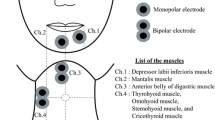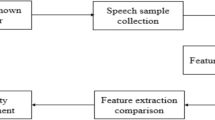Abstract
Media forensics tries to determine the originating device of a signal. We apply this paradigm to microphone forensics, determining the microphone model used to record a given audio sample. Our approach is to extract a Fourier coefficient histogram of near-silence segments of the recording as the feature vector and to use machine learning techniques for the classification. Our test goals are to determine whether attempting microphone forensics is indeed a sensible approach and which one of the six different classification techniques tested is the most suitable one for that task. The experimental results, achieved using two different FFT window sizes (256 and 2048 frequency coefficients) and nine different thresholds for near-silence detection, show a high accuracy of up to 93.5% correct classifications for the case of 2048 frequency coefficients in a test set of seven microphones classified with linear logistic regression models. This positive tendency motivates further experiments with larger test sets and further studies for microphone identification.
Preview
Unable to display preview. Download preview PDF.
Similar content being viewed by others
References
Kraetzer, C., Oermann, A., Dittmann, J., Lang, A.: Digital Audio Forensics: A First Practical Evaluation on Microphone and Environment Classification. In: 9th Workshop on Multimedia & Security, pp. 63–74. ACM, New York (2007)
Witten, I.H., Frank, E.: Data Mining: Practical Machine Learning Tools and Techniques, 2nd edn. Morgan Kaufmann, San Francisco (2005)
SHAMAN - Sustaining Heritage Access through Multivalent ArchiviNg, http://shaman-ip.eu
SoX – Sound Exchange, http://sox.sourceforge.net
Donahl, M.: Forensische Analyse von Audiosignalen zur Mikrofonerkennung, Masters Thesis, Dept. of Computer Science, Otto-von-Guericke University Magdeburg, Germany (2008)
Filler, T., Fridrich, J., Goljan, M.: Using Sensor Pattern Noise for Camera Model Identification. In: Proc. ICIP 2008, San Diego, pp. 1296–1299 (2008)
Dirik, A.E., Sencar, H.T., Memon, N.: Digital Single Lens Reflex Camera Identification From Traces of Sensor Dust. IEEE Transactions on Information Forensics and Security 3, 539–552 (2008)
Gloe, T., Franz, E., Winkler, A.: Forensics for flatbed scanners. In: Proceedings of the SPIE International Conference on Security, Steganography, and Watermarking of Multimedia Contents, San Jose (2007)
Khanna, N., Mikkilineni, A.K., Chiu, G.T., Allebach, J.P., Delp, E.J.: Survey of Scanner and Printer Forensics at Purdue University. In: Srihari, S.N., Franke, K. (eds.) IWCF 2008. LNCS, vol. 5158, pp. 22–34. Springer, Heidelberg (2008)
Bayram, S., Sencar, H.T., Memon, N.: Classification of Digital Camera-Models Based on Demosaicing Artifacts. Digital Investigation 5(1-2), 49–59 (2008)
Oermann, A., Vielhauer, C., Dittmann, J.: Sensometrics: Identifying Pen Digitizers by Statistical Multimedia Signal Processing. In: SPIE Multimedia on Mobile Devices 2007, San Jose (2007)
Maher, R.C.: Acoustical Characterization of Gunshots. In: SAFE 2007, Washington D.C., USA, April 11-13 (2007)
Oermann, A., Lang, A., Dittmann, J.: Verifier-tuple for audio-forensic to determine speaker environment. In: Proc. MM & Sec 2005, New York, pp. 57–62 (2005)
Author information
Authors and Affiliations
Editor information
Editors and Affiliations
Rights and permissions
Copyright information
© 2009 Springer-Verlag Berlin Heidelberg
About this paper
Cite this paper
Buchholz, R., Kraetzer, C., Dittmann, J. (2009). Microphone Classification Using Fourier Coefficients. In: Katzenbeisser, S., Sadeghi, AR. (eds) Information Hiding. IH 2009. Lecture Notes in Computer Science, vol 5806. Springer, Berlin, Heidelberg. https://doi.org/10.1007/978-3-642-04431-1_17
Download citation
DOI: https://doi.org/10.1007/978-3-642-04431-1_17
Publisher Name: Springer, Berlin, Heidelberg
Print ISBN: 978-3-642-04430-4
Online ISBN: 978-3-642-04431-1
eBook Packages: Computer ScienceComputer Science (R0)




